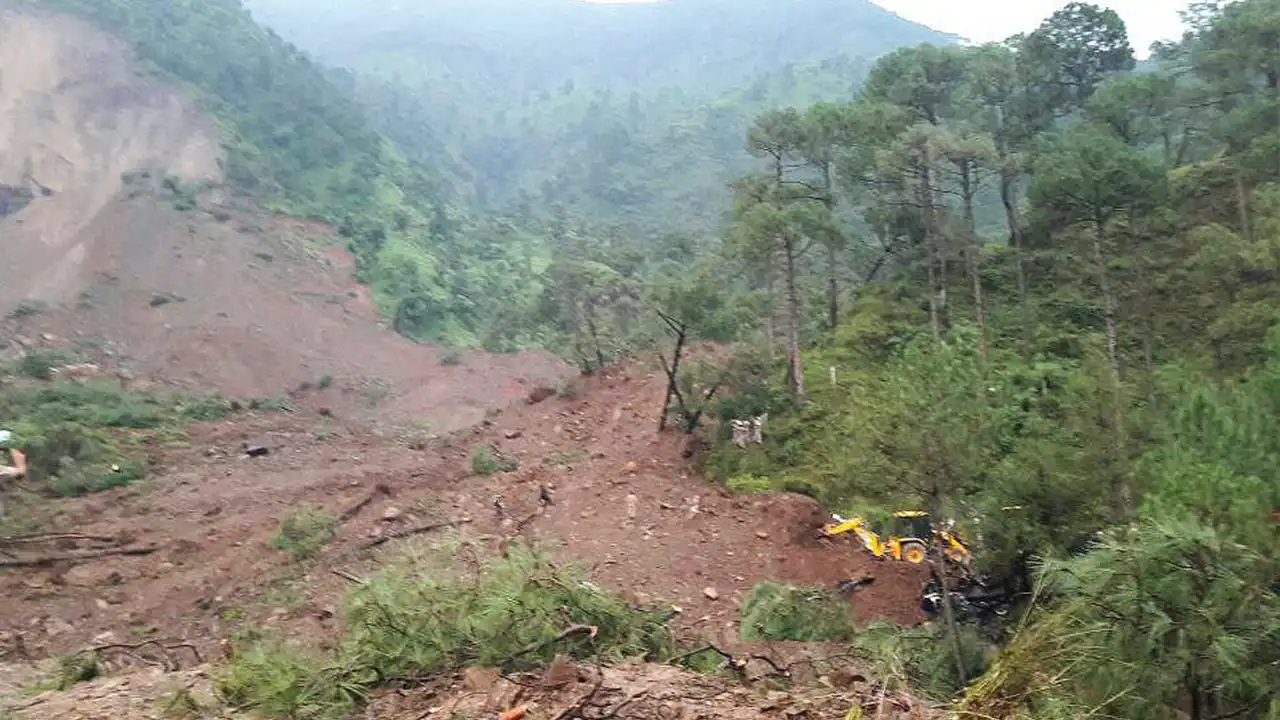Introduction to Monsoon Mayhem in the Himalayas
The monsoons have wreaked havoc on the north Indian states, with Himachal Pradesh and Uttarakhand suffering the most. Monsoon rains, landslips, and flash floods have resulted in massive destruction, particularly in Himachal Pradesh, with buildings collapsed and roads blocked, disrupting normal life. In the meantime, Uttarakhand is on its guard as the heavy rain continues to threaten to unleash flash havoc. This article broaches the destruction wrought by monsoon havoc in such regions and the dilemma that locals and the government are facing.
Himachal Pradesh: A State Under Siege
Mandi District Collapses Buildings
Himachal Pradesh has been severely hit by monsoon havoc, with Mandi district taking the worst beating. Cloudbursts and flash floods led buildings and houses to collapse, leaving individuals in a state of panic. One was found dead and over 12 were missing as of July 1, 2025, following the Mandi landslides and floods. Buildings and houses collapsing, along with bridges like the Bakhli and Kuklah bridges, have cut off connectivity, isolating some areas. The State Emergency Operation Centre, or SEOC, said 259 roads, with 129 in Mandi district alone, remain closed due to landslides and debris.
Road Obstructions Disable Connectivity
Heavy rain has closed the main roads, including Chandigarh-Manali National Highway, leaving passengers stranded and supplies cut off. It has 92 damaged roads, 614 transformer points, and 130 water supply schemes destroyed in the Sirmaur district, exacerbating the situation. Monsoon devastations have also closed schools in the Kangra, Hamirpur, Mandi, and Shimla districts as the administration takes a safety-first approach following red alert by the India Meteorological Department (IMD).
Rescue and Relief Operations
Rescue operations are in full swing, with the National Disaster Response Force (NDRF), State Disaster Response Force (SDRF), and police leaving nothing to chance. Over 332 people, including 278 of Mandi origin, have been rescued, but search operations for missing people are on. IMD has forecast heavy rainfall in the next seven days, orange alert for five days, which means no respite from monsoon madness on the cards soon.
Uttarakhand: Under High Alert
Char Dham Yatra Affected
The monsoon mayhem in Uttarakhand has put the state into a whirlpool, and seven districts are on orange alert. The Char Dham Yatra, the mass pilgrimage that attracts thousands to it, has suffered due to landslips and road blockades. Among the routes that have been hit are the Rishikesh-Badrinath and Rishikesh-Gangotri routes, causing a blow to tourism and local economies. Heavy rains unrelenting have brought life to a standstill in hilly as well as plain areas with the administration making an appeal to the public to remain calm.
Infrastructure at Risk
The constant rains have raised concerns regarding the infrastructural damage. A similar monsoon debacle last year in 2022 resulted in 21 deaths in Himachal Pradesh and four in Uttarakhand as flash floods and cloudbursts washed away the area. This time, the state is bracing for even greater misery as rivers overflow and landslides smash hope to render homes and roads in a pile of rubble. The administration has shifted the vulnerable spots and deployed flood control officials to contain the calamity.
The Human and Economic Cost
The monsoon destruction has caused loss of lives and has inflicted huge economic losses. In Himachal Pradesh, 23 lives have been lost to rain-related accidents since June 20, 2025, when the monsoon started. Loss of houses, bridges, and infrastructure has left people stunned from the experience of rebuilding. Himachal Pradesh faced damages of Rs 8,100 crore in 2023, with 2,200 houses lost, indicating the frequency of the disasters.
Climate Change and Monsoon Mayhem
Climate change is the primary reason for monsoon mayhem in the Himalayan states, say experts. Increased temperature, along with volatile weather patterns, has made rain unreliable, leading to recurrent cloudbursts and flash floods. With rising danger in hill states like Himachal Pradesh and Uttarakhand, strong infrastructure and disaster readiness become essential.
A Call for Resilience
As monsoon devastation continues to rampage, Himachal Pradesh and Uttarakhand are facing immense pressure. The short-term need is the rescue operation and restoration of connectivity, but long-term measures are the priority. Fortification of infrastructure, enhancement of drainage mechanisms, and strengthening investment in early warning systems can reduce the effect of future monsoons. At present, people and the authorities have to endure this situation together in anticipation of a respite from the unrelenting rains.







